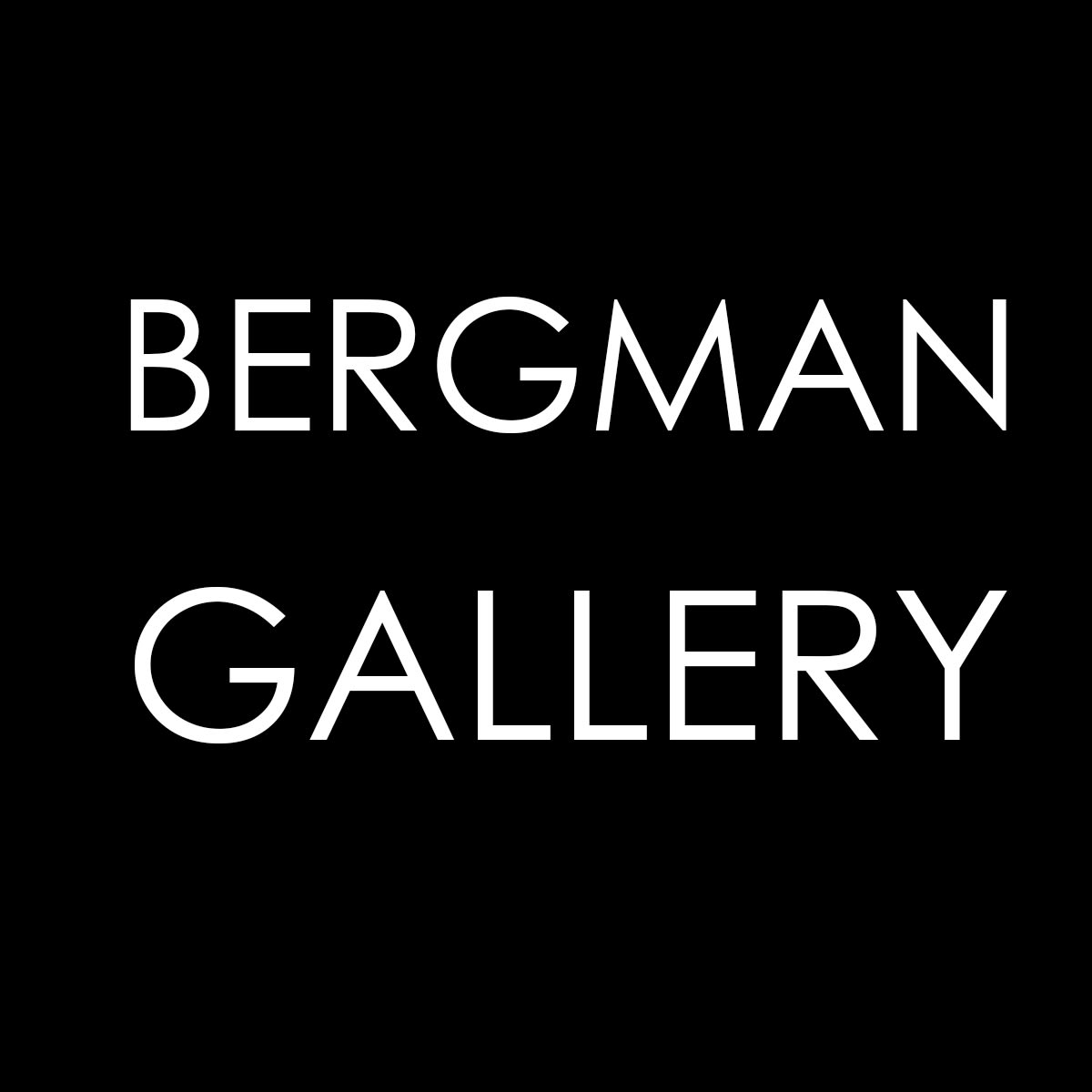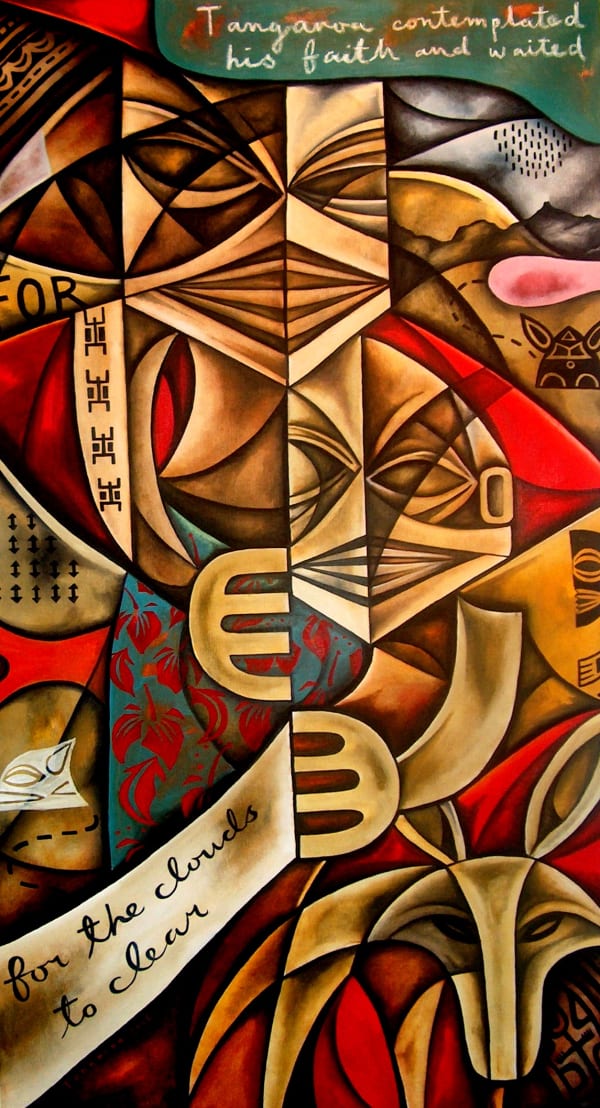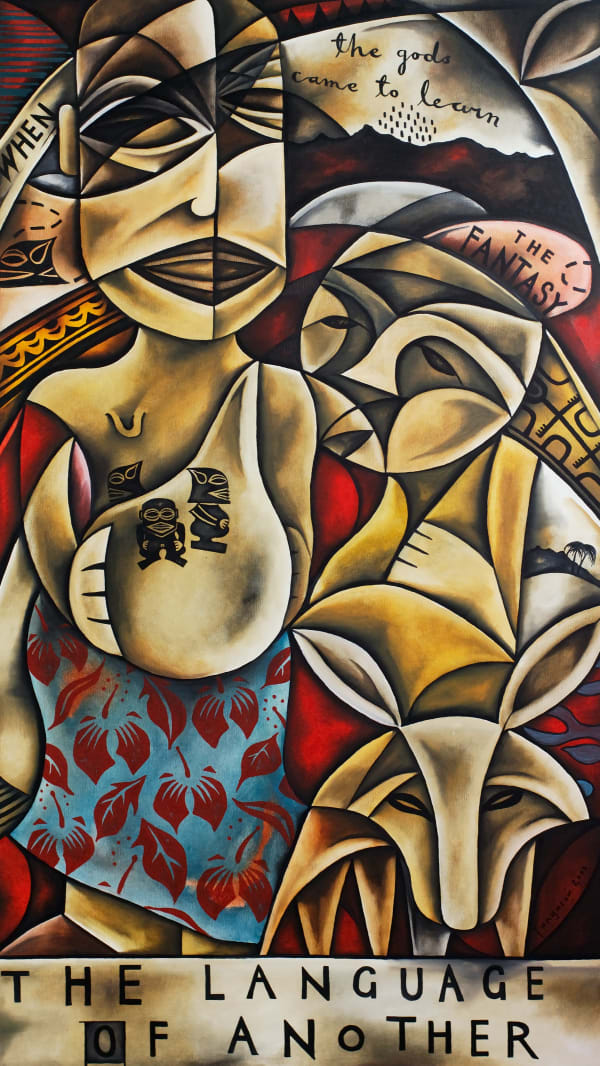On the surface, Mahiriki Tangaroa’s paintings Waiting for the Clouds to clear and Language of Another suggest the vibrancy of Pacific island life, and yet there is much that lies beneath.
The most striking thing about Cook Islands artist Mahiriki Tangaroa is her intensity. When I first met her for coffee at Beachcomber Gallery on the island of Rarotonga, I wilted in the humidity, with my hair clinging to my face while she maintained a casual elegance. The conversation began in a meandering fashion but gradually worked its way around to exposing Mahiriki’s artistic concerns: local politics, cultural identity, and the links between traditional Polynesian culture and modern day life. The discussion was peppered with references to the family and tribal genealogies and histories that are embedded in the local culture. As Mahiriki spoke of these things, in her eyes I could see the kinetic movement of her mind, as she pondered the forces that shape her paintings.
Mahiriki Tangaroa’s paintings are saturated in colour, combined with a patterning steeped in the mythology of Western art: the conventional lines of Cubism. These elements create a visual comfort zone derived of familiarity and beauty, but one that ultimately proves superficial and delusory.
The first thing I saw in her companion paintings, Language of Another and Waiting for the Clouds to Clear, was their trinity of figures. Two are ancient Gods whose images Mahiriki has adapted from the sacred carvings once used in worship. The largest is the God that is the artist’s namesake – Tangaroa – God of the sea and of creation. In Language of Another he carries three figures across his chest, perhaps the sons who will be the first in a long line of descendants to come. A Pareu (the indigenous sarong) is wrapped around Tangaroa’s waist concealing what is his considerable male endowment. It lends him a feminine element, also required as a god of fertility. By Tangaroa’ side stands a Goddess from the nearby island of Aitutaki, whose name we no longer know. As their child we have a Polynesian dog.
In pre-Christian times, Tangaroa and a pantheon of Gods not only offered hope but were instrumental in preserving the laws of the land and sea and imposing conditions on the right time to fish and plant. When Christian missionaries, who arrived in the 1820s, condemned these Gods as false, they disrupted a system that had helped to sustain a fragile island environment with limited natural resources. These Gods, central to Mahiriki’s paintings, are from a lost world – one she wouldn’t have us reinstate, but whose values she would like us to acknowledge.
It took me a while to comprehend the significance of the Polynesian dog until I considered how on Rarotonga, these placid, prick-eared dogs are left free to roam. In ancient times, the ancestors of these modern dogs accompanied Polynesian peoples who explored the Pacific in their ocean-going canoes. In Mahiriki’s paintings, they allude to the freedoms of the past and, I imagine, to the Inherent Polynesian desire to travel without boundaries. Together, these three figures form what, Mahiriki describes as a ‘dysfunctional family, whose modern-day existence reflects the tenuousness of traditional Polynesian values and sensibilities.
Both paintings also contain miniature landscapes depicting Rarotonga’s distinctive skyline of volcanic peaks. This landscape has become a symbol of national identity, and now that there are more Cook Islanders living overseas than in the Islands themselves – a result of depopulation as people seek better opportunities in foreign lands – a glimpse of these peaks viewed from the airplane window heightens a sense of homecoming for those who return to the promised land in search of their identity.
Mahiriki has also used words in her paintings, which help to unite and make sense of these disparate elements. She tells us that the ancient gods came to learn the language of another, to which she has added – the fantasy. With the coming of the missionaries and later of the British colonists and now foreign aid, it is in fact the peoples of the Cook Islands who have learned the language of another. This is a language that vies for supremacy with traditional culture, clashing just as surely as the imported Hibiscus ‘Hawaiian shirt’ pattern of Tangaroa’s Pareu does with the indigenous patterns once seen on canoes and slit-drums also repeated in Mahiriki’s paintings. Then we have the fantasy language of the Cook Islands an outward projection of a tropical paradise of swaying palms, azure lagoon waters, lilting ukulele music and hula dancing to the beat of wooden drums. Yet as Mahiriki implies, this too is learned, and sometimes it conceals the underlying richness of the local culture with its strengths in kinship, and the dense genealogies that connect the ancient and modern worlds which are deeply rooted in an enduring attachment to the land itself.
The title Waiting for the Clouds to Clear ostensibly refers to the summits of Rarotonga’s peaks, which are each morning cloaked in a white mist that gradually clears as the day opens up, yet the very next morning the clouds have returned. The god Tangaroa contemplates his faith, and he sits waiting for the clouds to clear, perhaps fruitlessly. How long can the traditional culture he represents, broken into so many parts, survive the forces of social change?
Now when I think of Mahiriki’s colourful pattern work – formed as it is by diverse, intersecting lines – I see its truer meaning, for these lines mark the fractures and connections between past and present. This is the reality of a Pacific nation that daily questions its traditions and culture. To non-Polynesians, paintings that deal with these kinds of issues are supposed to possess a kind of visual bleakness, so Mahiriki Tangaroa’s works are deceptive in their beauty. In truth, they are statements of uncertainty and longing, and I revel in the way they invoke the complexity of the Cook Islands.
Published: Essentials Magazine, Autumn, 2009.



